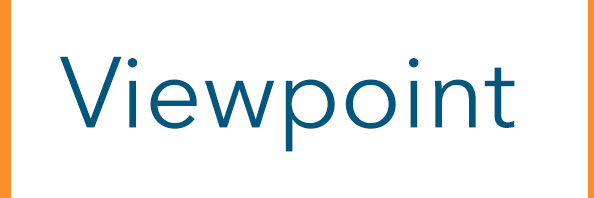There’s a growing consensus that the use of open educational resources (OER) has reached a turning point. Spurred by the shift to online learning during the pandemic and ongoing efforts by states, institutions, philanthropies and individual faculty members to make learning materials more accessible, affordable and responsive to students’ experiences and needs, nearly one in four instructors (22%) used OER in fall 2022, up nearly fivefold since 2016.

While OER has grown to include a wide range of highly adaptable — and high quality — materials, faculty are still developing the strategies and skills to align materials with other components of learning, including test banks, study materials and similar resources that can guide students through challenging material. And institutions are still developing the necessary supports, professional learning opportunities and flexibility faculty need to realize the benefits of OER and open pedagogy, particularly as faculty seek to integrate OER with more equity-minded and culturally responsive approaches to teaching.
Evolving OER
At some institutions, we have seen faculty leveraging adaptive technology in concert with OER instead of proprietary materials to ensure that the approach to learning can be as responsive to student needs as the open content they are adapting in their classrooms.
A pilot project of adaptive courseware serving more than 7,500 students at seven community colleges in the Achieving the Dream (ATD) Network found that the technology helped students track their own learning and master complex topics in a wide range of disciplines. Participants in the Every Learner Everywhere Adaptive Courseware for Early Success initiative also found that adaptive courseware was a significantly lower-cost alternative to traditional textbooks, suggesting that pairing it with open resources — still the exception, not the norm — could help further reduce student costs.
One institution that has paired adaptive courseware with OER is Cuyahoga Community College in Ohio, where psychology faculty use the technology to help students progress through the open textbooks used in several courses. The effort took the science of learning and OER and put them together. This involved breaking lengthy assignments into smaller pieces and interspersing them with videos, quizzes and self-checks. These activities inform personalized study plans embedded in the adaptive courseware, helping students track their own learning and faculty members identify where they excel and struggle.
Early results are promising. The college saw student success rates increase by nearly 10% in psychology classes using the adaptive/OER combination. While this represents just one set of courses, faculty observed that because students are engaged regularly throughout the semester, they chose to stick it out longer.
Seven strategies
Institutions participating in the Every Learner Everywhere initiative learned that adaptive courseware works best when it is an integral part of teaching and learning, not an add-on or supplemental resource. Among the key strategies to consider:
Align course materials with outcomes. Both OER and the courseware that supports it must be aligned with learning outcomes to avoid adaptive assignments that are repetitive or cover different material than classroom lectures and texts.
Help students understand how — and why — adaptive courseware works. Faculty should plan to explain not just the functionality of courseware, but the rationale behind it. Adaptive courseware can feel like a lot of work to students who have not used the technology before. It is important to help them realize that adaptive work helps maximize their study time as they progress.
Promote agency and autonomy While OER shows significant potential to promote student voice and agency in their courses, adaptive courseware can provide a balance of tools and autonomy that allows students to self-direct their learning when it is configured in ways that keep students from being stuck in endless cycles of review. Adaptive courseware highlights materials students need to review or retry, but the decision to do so or move on should be kept in the hands of the student.
Track student progress. Courseware allows faculty a view into student progress, which can be used to help them adapt their pedagogy. Faculty can pinpoint the sections in which students are excelling or struggling as a class and determine where to provide the most effective focus of their time in class. Faculty also can track individual student progress and follow up with those who may need support.
Be mindful of pacing. Like all instructional technology, adaptive courseware can’t prevent students from waiting until the last minute to do the work, meaning that faculty must still monitor and support student progress. However, the automation of grading and student learning plans can free up faculty time and energy to focus on the students who need extra help.
Scale up using course shells. Faculty can create course shells that colleagues can use and adapt — which has proven particularly helpful for involving adjunct faculty in the effort. When combined with the flexibility of OER, this capability can also help ensure course changes can scale to better fit evolving learning objectives.
Support faculty as they learn — and continue to use — OER and courseware. Along with the complexity of initial implementation, the combination of reviewing and supplementing open materials and tracking student progress in adaptive courseware represents an ongoing time commitment for faculty members, which means that professional learning must be ongoing.
When it’s been thoughtfully implemented and used, we’ve seen the potential of OER-based adaptive courseware to help students succeed in specific courses. And the technologies also have broader benefits. Teaching with adaptive courseware and OER allows faculty to help students learn how to learn and think critically — skills that will serve them well throughout their lives.
* * *

(From left) Dr. Ruanda Garth-McCullough, director of program development at Achieving the Dream (ATD), leads the Every Learner Everywhere digital learning initiative at ATD. Dr. Richard Sebastian is director of open and digital learning at ATD. Stacey S. Souther is a professor of psychology at the Eastern Campus of Cuyahoga Community College (Ohio).





